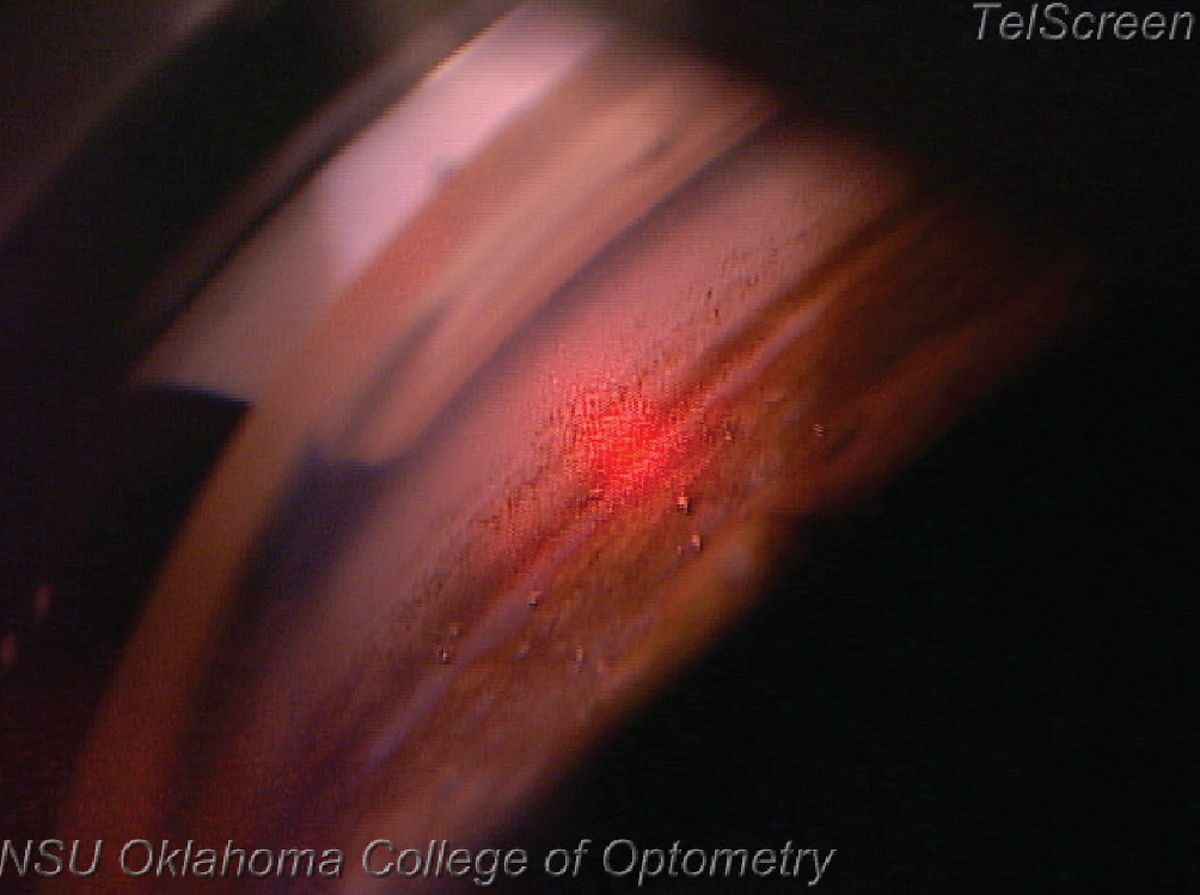Recognized as a first-line treatment for glaucoma and ocular hypertension, selective laser trabeculoplasty (SLT) is also increasingly considered to be within the purview of optometric practice. As such, ODs should familiarize themselves with the varying techniques and protocols, as international guidelines remain unclear on critical aspects of the procedure, like laser extent of treatment area and energy settings. As such, technique decisions are based currently on opinion and habit rather than evidence on the methods’ efficacy. Looking to change this inconsistency, Swedish researchers have conducted a prospective study appearing in Glaucoma comparing different selective laser trabeculoplasty (SLT) techniques.
 |
| Greater peri- and postoperative discomfort and greater duration was observed with high energy SLT, likely connected to inflammatory mediators part of the procedure’s mechanism of action. Photo: Nate Lighthizer, OD. Click image to enlarge. |
Clinical outcomes were measured of the four most significant SLT variants in 400 patients with either glaucoma or ocular hypertension. Consisting of both treatment-naïve and glaucoma treatment patients at different disease stages, the cohort received one of four SLT treatment protocols:
These included either performance with 50±5 laser spots in 180° of the trabecular meshwork or 100±10 spots in 360°; laser power was titrated to a “standard energy” level just below cavitation bubble level or to a “high energy” level to produce cavitation bubbles at 50% to 75% of laser applications. With these categories, four protocols were included:
- 180/standard: 50±5 laser spots in 180° of the trabecular meshwork with power just below cavitation bubble level (“standard energy”)
- 180/high: 180° treatment area with power level that produces cavitation bubbles at 50% to 75% of applications (“high energy”)
- 360/standard: 100±10 spots in 360° of trabecular meshwork and standard energy as above
- 360/high: 360° treatment at high energy as above
Overall, the 360/high SLT protocol performed best, yielding superior results in all primary endpoints. Intraocular pressure (IOP) reduction of 5.4mm Hg was observed in the 360/high group, compared with 3.4mm Hg, 3.2mm Hg and 4.2mm Hg seen in the 180/standard, 180/high and 360/standard groups, respectively, one to six months after the procedure occurred. Success rate of the 360/high group was also greater six months after—totaling 58.3%, while the other groups’ rates were 30.2%, 29.3% and 41.7%. Median time to glaucoma treatment escalation was more than twice as long with the 360/high group, totaling 1,323 days, while the others were 437, 549 and 620 days. Post-op discomfort was more common in this group but symptoms were mild and transient; adverse events were rare across all groups.
The study authors note that their results suggest prior glaucoma treatment may adversely impact efficacy; treatment-naïve eyes had displayed best IOP reduction from 360/high SLT, followed by eyes with prior laser treatment, then those with previous pharmacological treatment and lastly, eyes with both laser and pharmacological options.
The authors offer the suggestion that “the 360/high protocol should be the generally recommended SLT variant. However, each patient must be assessed individually. In some cases, such as patients with pigment dispersion glaucoma or a history of uveitis or macular edema, a milder treatment may be appropriate.”
As they believe, “in addition to helping to preserve patients’ visual functions, implementation of 360/high SLT as a standard treatment is likely to lead to fewer SLT re-treatments, fewer prescriptions for glaucoma eyedrops and a reduced need for glaucoma surgery.”
Dahlgren T, Ayala M, Zetterberg M. Optimal performance of selective laser trabeculoplasty results from the Swedish Optimal SLT Multicenter Randomized Controlled Trial. Ophthalmol Glaucoma. October 12, 2023. [Epub ahead of print]. |

